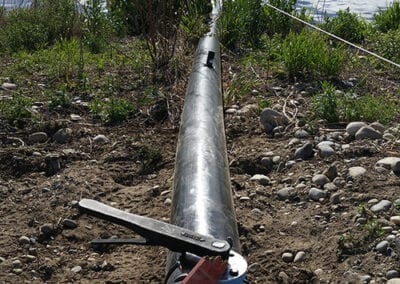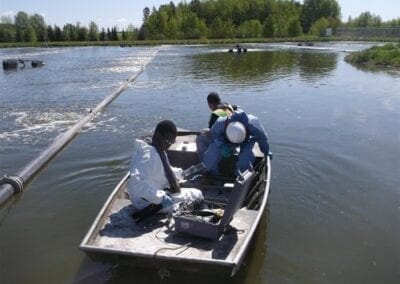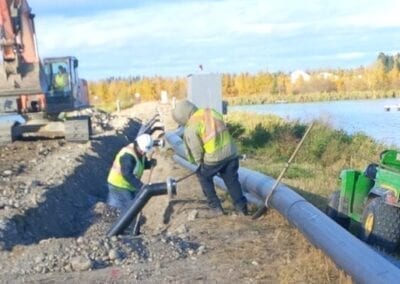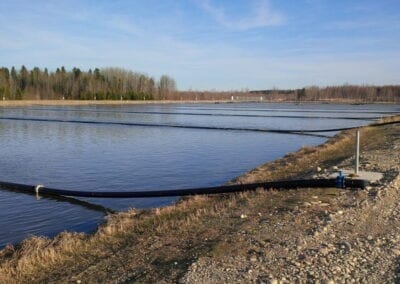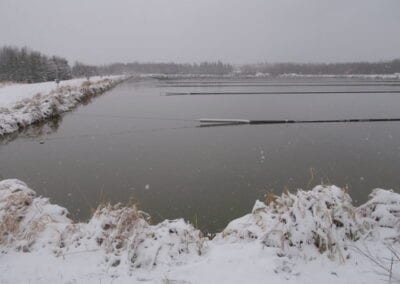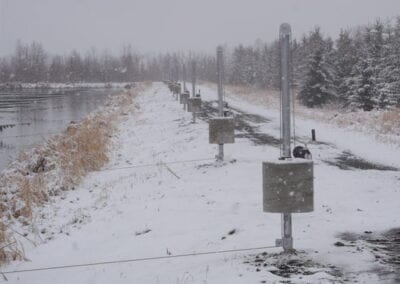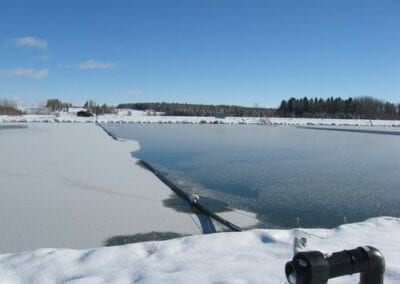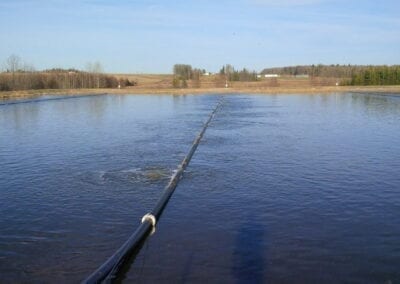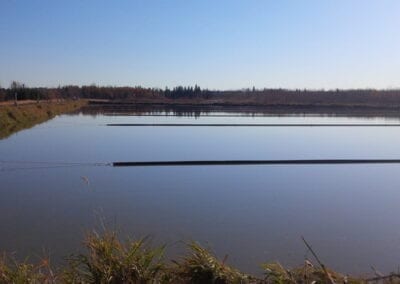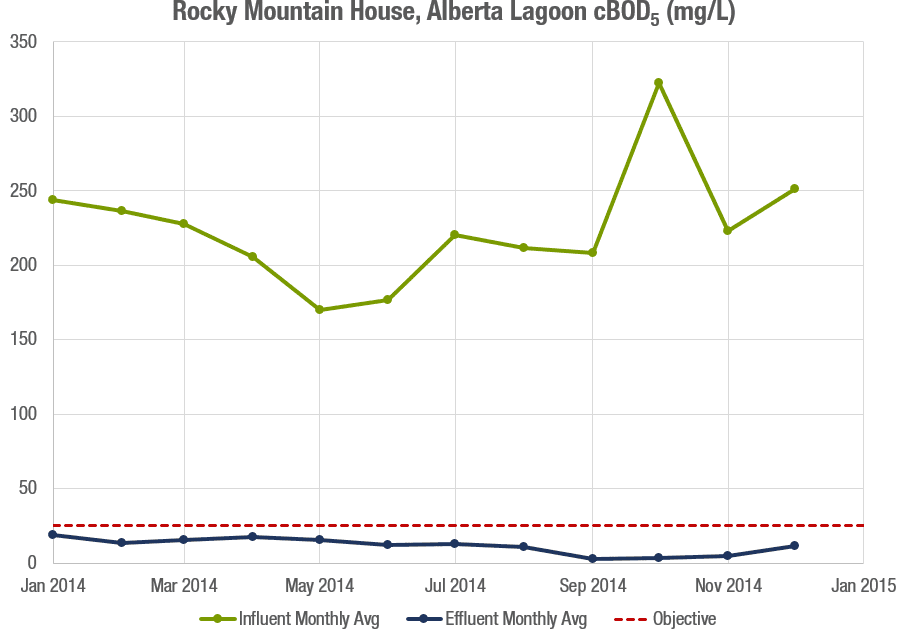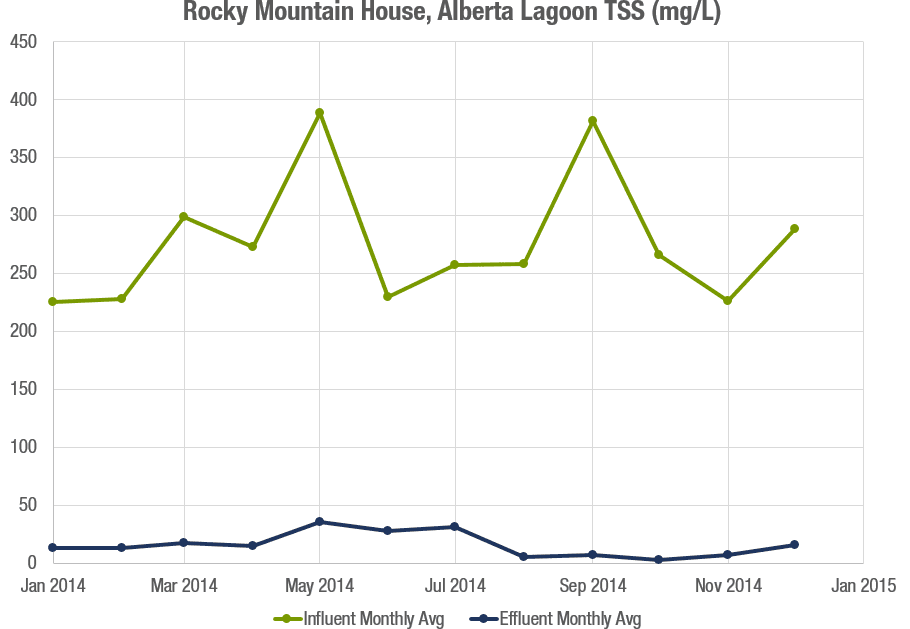Rocky Mountain House, Alberta
Lagoon upgrade helps town achieve updated BOD and TSS limits and avoid building mechanical plant.optAER®
Project Information
Location: Rocky Mountain House, Alberta
Project Type: Municipal Wastewater Treatment
Completion Date: January 2014
Treatment Objectives
Design Flow:
3,333 m3/day (0.88 MGD)
Effluent Quality Requirements:
cBOD5: 25 mg/L
TSS: 25 mg/L
Other case studies you may be interested in:
Park View, Iowa
Sanitary district upgrades lagoons for full cold weather ammonia nitrification within existing footprint.
Absarokee, MT
Fully utilizing a combination of Nexom’s expert technologies for BOD reduction and cold-water nitrification
Kingsley, IOWA: optAER & SAGR
optAER® SAGR®Project Background & Challenges Kingsley, population of 1,411 residents in 2020, is located 193 miles northwest of Iowa’s capital...
Colesburg, IA: optAER & SAGR
Combining two lagoon-based wastewater treatment facilities and upgrading long-term ammonia compliance.
Project background and challenges
If you drive northwest from Calgary, you’ll reach the confluence of the Clearwater and North Saskatchewan Rivers. Once a key location for fur traders in the 18th century, today it is the site of Rocky Mountain House, Alberta.
Originally established as a fur trading post by The North West Company, settlement continued as the appeal of lush farmland and other natural resources drew people to the area. While the post closed in 1875, the name of Rocky Mountain House was retained, and it would soon serve as a launch point for travellers heading further west or north, a trend which has continued into present times. Today, it is home to nearly 7000 people.
In 2009, the town’s wastewater treatment facility found itself in need of an upgrade when its current system became unable to consistently achieve its BOD and TSS removal limits.
With its lagoons located in town, the town initially explored the option of transitioning to a mechanical plant, while also planning to build the new wastewater treatment plant outside the townsite. However, the projected costs associated with that level of project forced the town to consider that option in long-term planning and to look at a more affordable system that could achieve their immediate objectives.
THE NEXOM ANSWER
In the case of Rocky Mountain House, the option to change their wastewater treatment facility from lagoon-based to mechanical was driven by a desire to move the facility outside of the town. However, due to the significant cost of this option, Rocky Mountain House chose to shift their focus and explore options to upgrade their existing system.
Engineers from Rocky Mountain House and Stantec chose to upgrade the existing three-cell lagoon system using a Nexom optAER system, a pond-based wastewater treatment solution used in a wide spectrum of applications. In comparison to conventional mechanical treatment facilities, optAER-enhanced lagoons maintain the simplicity of the lagoon system, but at a fraction of the costs to construct and operate.
Minimizing Environmental Impact
The construction design for the site was not only to upgrade the existing lagoons, but also not damage the areas around them. An Environmental Construction Operation Plan (ECO) was developed to prevent and/or minimize the environmental impact of the project. Most of the work undertaken on site occurred in or on the wastewater, within the existing lagoon cells. While performing in-water work, care was taken to minimize bank erosion. Any excavation and backfilling work required was performed in such a way as to minimize disturbance to existing vegetation and to minimize erosion due to runoff, as well as to not compromise the integrity of the berm or lagoon liner. An area nearby was designated for material storage, as well as the staging of personnel and equipment in order to minimize surface disturbance.
Upgrading the Existing Lagoon System
The goal for this project was to maximize the use of the existing lagoon infrastructure and provide a process that was reliable, simple and cost effective to operate. The process also needed to provide consistent performance in winter water temperatures (November through April) that can be less than 1°C. The optAER system was designed to meet 10-year hydraulic and loading requirements (combined flows at 3333 3/day) and consisted of several upgrades, including the optAER aeration system with floating laterals for enhanced BOD and TSS removal. Three positive displacement blowers were installed to provide air supply for the optAER treatment system, to provide both the required airflow during normal system operation and the capability to operate at maximum pressure for diffuser purging. The additional benefits of using positive displacement blowers at Rocky Mountain House included consistent flow of air to the pond regardless of discharge pressure, as well as simple operation and maintenance. All three blowers were provided with all-weather sound-reducing enclosures for placement on an outdoor concrete pad. Aerating the existing lagoons would serve two key purposes – odour control and oxygen distribution for bacteria growth. Additionally, by utilizing the existing lagoons, Rocky Mountain House was able to realize cost savings both in the construction, and in the long-term operation and maintenance of the system. Despite the existing location of the lagoons inside town limits, odour control wasn’t a primary concern, but by aerating the existing system now, Rocky Mountain House could avoid this becoming an issue in the future as the town grew.
The Benefits of Adding Aeration
The primary purpose of the optAER system is to provide oxygen, residence and contact time for the natural bacteria, which ultimately convert the wastewater contaminates (BOD, ammonia, and TSS) to carbon dioxide, water, inert ash and nitrates. The optAER system does not rely on algae or natural surface aeration for providing oxygen to the wastewater.
With aerated cells, the diffuser density is based upon oxygen demand. The system installed at Rocky Mountain House consists of fine-bubble aeration distributed through diffusers suspended near the bottom of the pond to maximize oxygen transfer efficiency. The design of the diffusers prevents bubbles from amalgamating, resulting in excellent oxygen transfer rate and minimal head loss.
The diffusers are suspended at a uniform depth and attached to floating laterals for ease of retrieval. Through the rise of the bubbles and subsequent mixing, the solids settle out through the downward motion of the water between the diffusers where the circulation loop closes. When the solids reach the bottom of the lagoon, diffusers near the cell bottom provide additional oxygen for biodegradation. This process results in minimal organic bottom sludge accumulation, and aerobic digestion takes place within the aerated cells. This, combined with the slow rate of bubble rise, contributes to the overall efficiency of the system. Due to low sludge production in the system, retention time is retained for long term BOD removal. Providing oxygen at the sludge water interface significantly enhances long term organic solids digestion and sludge quantity reduction.
With floating laterals, the cells do not require dewatering or to be taken out of service for installation or maintenance. All work can be done from a boat using a 2-person crew.
Site Construction
Construction on the upgrade started in August 2013 and was completed in October, with commissioning and training taking place at the beginning of November 2013.
UPGRADED SYSTEM PERFORMANCE
The optAER system was designed to meet 10-year hydraulic and loading requirements (combined flows at 3333 m3/day). Since the lagoons were upgraded, average monthly effluent cBOD and TSS numbers have been consistently below the targeted levels throughout the year.
The successful implementation of the optAER system into the current lagoons created an updated system that could handle the town’s wastewater treatment for the foreseeable future. This greatly reduced the pressure to invest in moving the treatment facility outside town limits, and enabled Rocky Mountan House to make long-term plans with the comfort a smoothly-running, low-O&M optAER system provides.
In 2018, Nexom was again approached by Rocky Mountain House with a need to increase the capacity of the system. Expandability of the system had been discussed back in 2013, but a larger system wasn’t needed at the time. However, due to an unexpectedly rapid growth in town population, this update became necessary. Nexom added additional diffusers, laterals and a fourth blower to increase the abilities of the system to deal with TSS and BOD.

